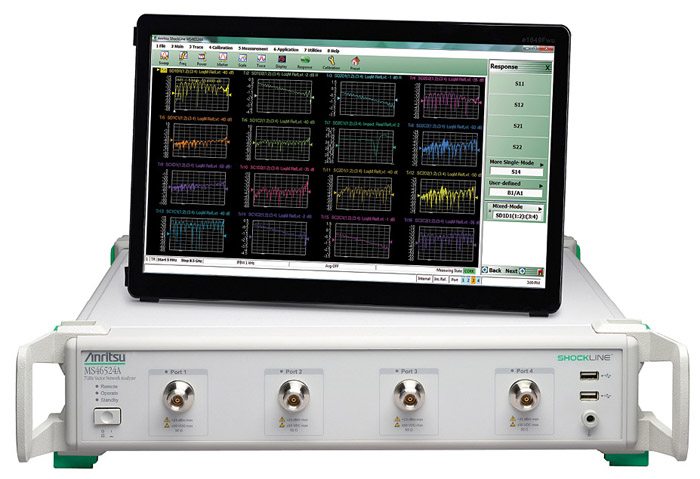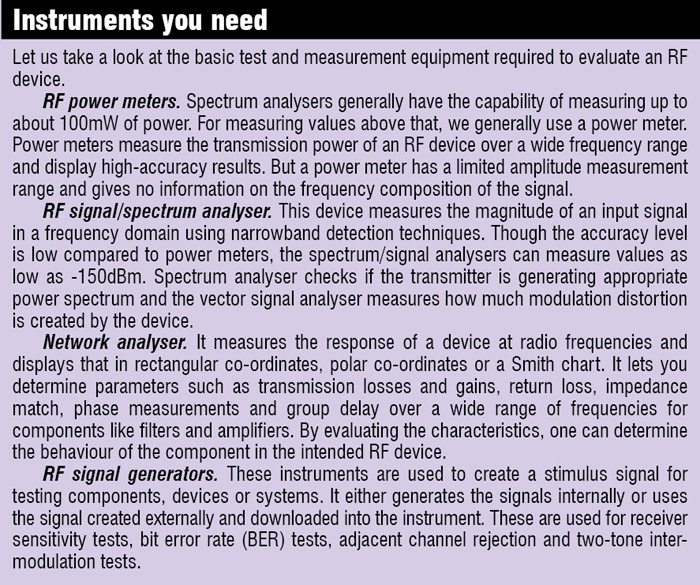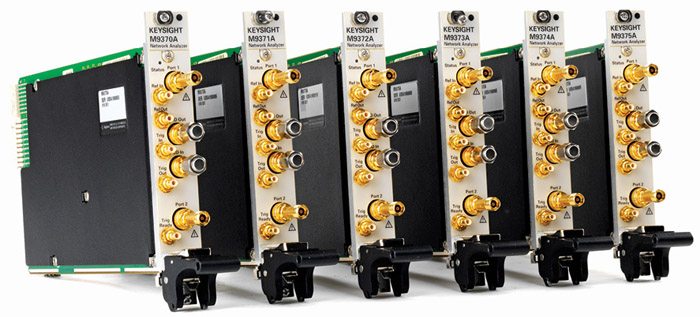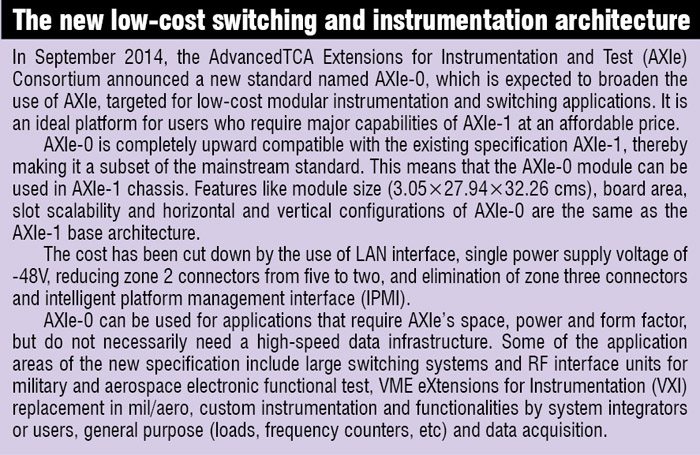Millions of devices these days operate and communicate in radio frequency (RF) range, which spans from 3kHz to 300GHz of the electromagnetic spectrum. From radio frequency identification (RFID) tags attached to clothes in shopping malls to Bluetooth headsets, and from Wi-Fi-enabled laptops to complex medical devices, this technology has become inevitable in our lives. This steep increase in the number of devices has led to the introduction of several industry standards. In order to bring out a new RF instrument to the market, the designer has to take it through a series of tests and ensure that the device meets the industry standards.

The testing and verification process for RF applications is done at two stages—component level and system level. In component level testing and verification, each design component or building block of the system (amplifier, multiplexer, filter, modulator/demodulator, phase-locked loop, and transmitter and receiver antennae) is considered as a subsystem and its parameters (modulation scheme, frequency, sensitivity, saturation, etc) are tested independently. In system level verification, the tests and measurements are done on the RF device as a whole, and it simulates what exactly that system is going to perform.
With a wide range of applications and systems incorporating the RF principle and the extensive researches happening in this field, it is important for a design engineer to stay updated with the latest technologies and trends in RF communication.
Technology trends
The generally growing demand for higher throughput, faster results, customisability, reduced cost and better connectivity has led to greater researches in the field of wireless communication. Though the test and measurement field for RF devices also adapts to these enhancements, this field has not witnessed many path-breaking innovations in the past few years.
Analyses in real time. The previous generation of test and measurement equipment for RF devices faces a few challenges. With the dynamic nature of modern-day RF signals, it is necessary to understand the amplitude, frequency and modulation parameters over short and long intervals of time.


 One of the most popular products these days is the real-time spectrum analyser that has an operating speed that matches the speed of the system it is simulating. In real-time spectrum analyser (RTSA) architecture, fast and continuous sampling and calculations are performed in order to keep up with the changing input signals. This helps the user to view events that were invisible in previous architectures like swept tuned analyser and vector signal analyser. Latest RTSAs let you trigger these events, selectively capture them into memory and analyse them extensively in multiple domains. R&S FSVR series by Rohde & Schwarz, N9030A and N9040A series by Keysight Technologies, and SPECMON RSA3000 and RSA5000 series by Tektronix are some examples of RTSA.
One of the most popular products these days is the real-time spectrum analyser that has an operating speed that matches the speed of the system it is simulating. In real-time spectrum analyser (RTSA) architecture, fast and continuous sampling and calculations are performed in order to keep up with the changing input signals. This helps the user to view events that were invisible in previous architectures like swept tuned analyser and vector signal analyser. Latest RTSAs let you trigger these events, selectively capture them into memory and analyse them extensively in multiple domains. R&S FSVR series by Rohde & Schwarz, N9030A and N9040A series by Keysight Technologies, and SPECMON RSA3000 and RSA5000 series by Tektronix are some examples of RTSA.
Heat dissipation. Proper power dissipation techniques are essential for every electronic device. In case of instruments used for field applications, it is not practical to use bulky cooling systems as this increases the size and weight, and reduces the mobility of the testing instrument. Since such devices operate for long hours in rugged environmental conditions, these are placed inside a chassis that has an electrically-insulating and thermally-conducting layer of coating. This helps in the safe dissipation of large amounts of heat generated in an RF test and measurement instrument.
MIMO. Multiple-input and multiple-output (MIMO) is the method of using multiple antennae at both the transmitter and receiver sections in radio communication technology. It increases the link capacity, link reliability and spectral efficiency by exploiting multipath propagation, which was previously considered as interference. The fact that MIMO needs no extra bandwidth or transmit power in order to increase the data throughput and link range made most of the modern researches to be concentrated on this area.
The physical layer performance characterisation can be performed by the MIMO PXI test solution from Keysight Technologies. This solution provides flexibility for a validation engineer to try out a variety of test cases and ensure that the WLAN design works perfectly. In case of MIMO beamforming, even a slight inaccuracy in phase relationship will lead to irrelevant and misleading results. MB5 MIMO beamforming testing system was introduced by Spirent to automate the phase calibration in order to meet the tight tolerance values required by MIMO beamforming.
Femtocell. Femtocell is a small, low-power wireless access point that is used to provide better coverage for cellular networks inside homes, office buildings and public spaces. It is one of the recent advancements in mobile communication; the device resembles a wireless router.




